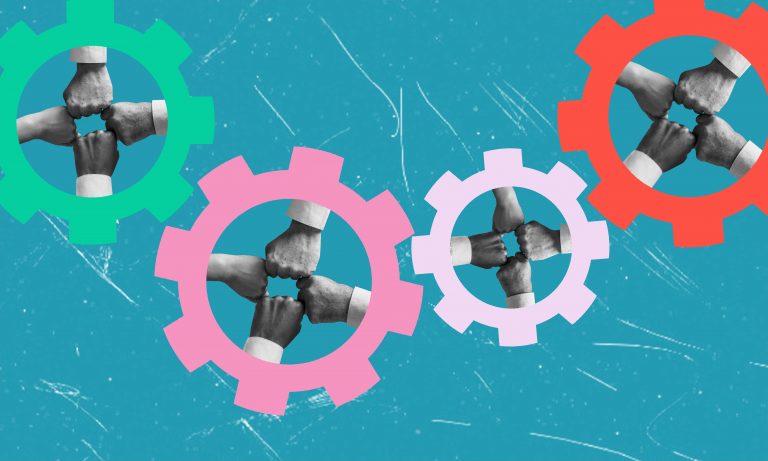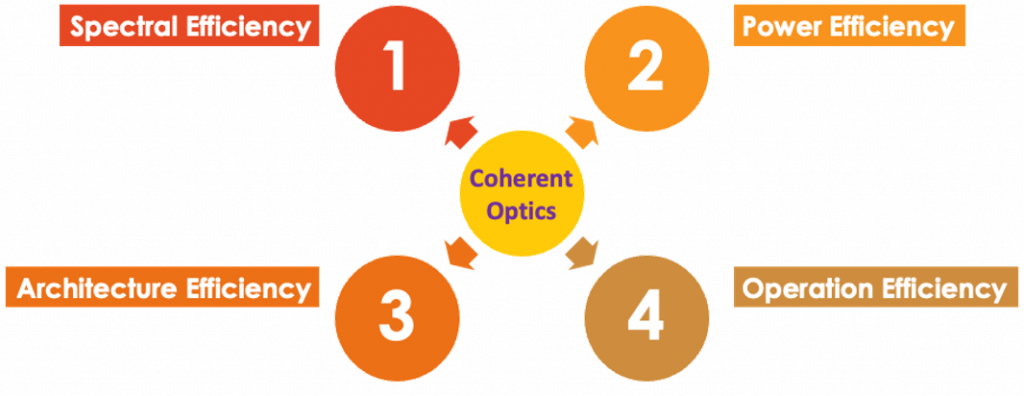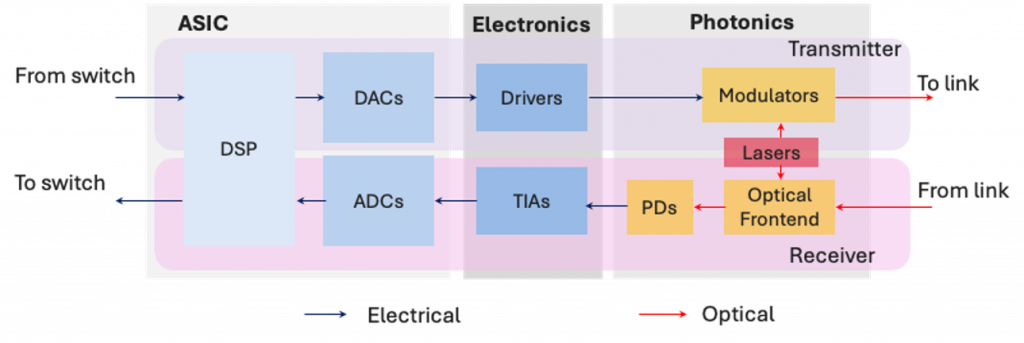Wired
XGS-PON Interoperability Event Wraps Productive Year of Testing

Key Points
- The fourth XGS-PON Interop·Labs event of 2025 brought new suppliers and chipset families into the testing mix, deepening CableLabs’ supplier diversity.
- The event expanded test coverage to include new OMCI message exchanges and configuration scenarios, which were inspired by findings from earlier events.
- Test cases included new performance-monitoring tests, basic notifications tests and greatly enhanced test plan support for integrated PON gateways.
Our final Interop·Labs event of 2025 was held last month at CableLabs headquarters in Louisville, Colorado. As with prior events, the week focused on interoperability aspects of the ONU Management and Control Interface (OMCI), defined via a combination of ITU-T Recommendation G.988 and the CableLabs Cable OpenOMCI specification.
This event continued our approach of pairing optical line terminals (OLTs) and optical network units (ONUs) from different suppliers to exercise real-world configurations, management and monitoring behaviors. Supplier engineering teams arrived with updated software, new device variants and a fresh set of test cases built from lessons learned through the year’s earlier interop events.
Supplier Participation in the XGS-PON Interop
Participating suppliers of customer premises equipment (CPE) brought a wide range of XGS-PON ONUs and PON residential gateways, representing multiple chipset families. These devices were paired with OLT platforms from Calix (E7-2) and Nokia (Lightspan MF-2) in a collaborative lab environment designed to exercise aspects of the OMCI implementation of the ONUs.
The diversity of CPE devices — including those based on PON SoCs not previously tested at these events — created meaningful multi-vendor pairings. Several new ONU suppliers also joined this event, expanding the ecosystem represented in our lab.
For the November interop event, the following suppliers provided CPE devices: Calix (ONU and multiple gateways), Gemtek (gateway), Hitron (multiple ONUs), Nokia (multiple ONUs and gateway), Sagemcom (ONU and gateway), Sercomm (ONU), Ubee (ONU and gateway) and Vantiva (ONU).
Testing Environment and Themes
As with our August event, each OLT supplier had a dedicated workbench with a small-scale PON Optical Distribution Network. Engineers used OLT debugging tools and our XGS-PON analyzer to collect OMCI traces and performance data.
During the week of testing, engineers focused on several interoperability-related themes:
- The impact of the extended VLAN tagging — Downstream mode attribute on the handling of Priority Code Point (PCP)-marked frames
- OLT configuration to support vendor-specific gateway eRouter VLAN IDs
- MAC Bridge Service Profile (CPE MAC learning) behavior
- 64-bit Ethernet frame counter performance monitoring reporting
- Forwarding of jumbo Ethernet frames
- Notification and alarm behavior of ONU Ethernet link state changes
- Software download and activation processes
Across these themes, the goal of the event remained clear: identify inconsistencies, understand root causes and convert findings into actionable improvements. Test results were encouraging. Many items identified in earlier events have been addressed by suppliers, even as this expanded test coverage uncovered additional issues that will guide our next round of improvements.
This event capped a productive year of XGS-PON interoperability testing at CableLabs. Throughout 2025, we steadily grew supplier participation, evolved the test plan to cover critical OMCI features more thoroughly and expanded support for diverse device types — specifically integrated PON gateways.
In February, CableLabs brought together three OLT suppliers to test their DOCSIS Adaptation Layer implementations, demonstrating how operators can use familiar DOCSIS-style configuration files to provision services on XGS-PON networks. The event validated the viability of this provisioning approach for operators transitioning to ITU-T PON technologies without replacing existing back-office systems.
During our April event, we focused more deeply on the Cable OpenOMCI, marking a milestone in the industry’s effort to improve cross-vendor compatibility. OLT suppliers from Calix, Ciena and Nokia paired their systems with ONUs from six suppliers to test five core OMCI functions.
Then, in August, CableLabs hosted another OMCI-focused event, bringing together the largest group of OLT suppliers yet, alongside seven ONU suppliers. Engineers tested requirements from the newly published I02 version of the Cable OpenOMCI specification, with expanded test cases covering ONU time synchronization and optical power levels.
Continuous Improvement Cycle
We plan to publish the I03 version of the Cable OpenOMCI specification — incorporating learnings from the April and August interop events — later this month. The findings from this event will be discussed in the CableLabs Common Provisioning and Management of PON (CPMP) working group and may generate new engineering change requests to the Cable OpenOMCI specification in the new year.
This cycle of lab testing, specification refinement and standards engagement is central to ensuring that XGS-PON networks can operate as truly multi-vendor systems.
See You Next Year
CableLabs has four additional PON Interop·Labs events scheduled in 2026, each focused on strengthening various aspects of ITU-T PON interoperability. We invite suppliers to join us in the CPMP and Optical Operations & Management working groups as we continue evolving our specifications. And we look forward to welcoming OLT and ONU suppliers back to our Louisville labs at our next interoperability event planned for January 2026.
Wired
The Pull of PNM: More Proactive, Less Maintenance Please

Key Points
- CableLabs and SCTE's proactive network maintenance working groups bring together operators and vendors to collaboratively develop tools and best practices that make network maintenance more proactive and efficient.
- These working groups offer opportunities for operators and vendors to shape the future of broadband network operations alongside other industry experts.
Proactive network maintenance (PNM) continues to make inroads on its goals of reducing troubleshooting time and cost while reducing the impact of network impairments on customer service. The broadband industry achieves this through grassroots efforts developed and shared by participants in two working groups. This global ecosystem of vendors and operators share their ideas, efforts and challenges to help move the community further on the path to efficient operations and improved services.
In a recent face-to-face meeting, we continued to make progress on several of the working groups’ workstreams, sprint toward some near term goals and set some long-term goals. And there is more to come!
Working Groups
CableLabs’ PNM Working Group (PNM WG) meets bi-weekly for all current work, with a focus on some specific workstreams on the off-weeks. SCTE's Network Operations Subcommittee Working Group 7 (NOS WG7) also focuses on proactive network maintenance and related workstreams. The CableLabs group focuses on developing the engineering and science to enable better PNM while NOS WG7 focuses on the field implementation of that engineering and science.
In addition, the chairs of these working groups meet often to manage the workstreams and ensure progress on key developments that benefit the industry most. Many members overlap between the two groups, which ensures an effective pipeline of research, development and implementation.
Workstreams
The proactive network maintenance working groups maintain progress on several developing workstreams, and a few of note have recently concluded.
Our Methodology for Intelligent Network Discovery (MIND) effort is an important workstream where we target repair efficiency through topology discovery and automation. Participants share developments and ideas on Thursdays, then bring the best results to Tuesday meetings, where we contribute canonical methods and software code for reference. This high cadence and open contribution are leading to well-developed ways to utilize channel estimation data for identifying features in the radio frequency (RF) network that aid in determining the ordinality and cardinality of network components. We accomplish this through an initial process of data cleanup to reveal the features in the signal, then through clustering and pattern matching methods we identify the features in the network and reveal the network's topology. As with all research, the initial process demonstrates functionality, which we have done; now we are working to make it reliable for all the diverse network designs and modify it for various PNM use cases.
The PNM WG has been working hard to develop GAI for Network Operations (NetOps) — or, more simply, AIOps. This group develops and shares the software and tooling to enable the output from NOS WG7 and PNM WG to be automated into network operations through retrieval-augmented generation (RAG) models and agentic AI solutions. In parallel, industry experts are peer reviewing the output from these GAI tools to ensure quality and engineering precision can be reliably delivered, improving on our own peer review process as we go.
Meanwhile, the PNM WG is developing standard ways to quantify impairments in the network as they are revealed in PNM data, referred to as the measurements work, to enable GAI applications and streamline PNM automation.
The PNM WG looks forward to publishing an update to our "Galactic Guide" at the beginning of 2026. The current version is available to the public. In the new version, you can look forward to receiving updates on the development of the measurements work and MIND work, in addition to initial methods to use Upstream Data Analysis (UDA), for those cable modems that can reveal the upstream spectrum.
New workstreams start when the groups complete earlier workstreams and queue up the next priority effort. The initial work on UDA was completed early this year, and more work on it is planned for the future. Likewise, NOS WG7 has recently completed outlining some new PNM training to come from SCTE, which updates the training to utilize new learning methods, and includes our newest knowledge about maintenance efficiency and proactivity.
PNM Face-to-Face
About once a year, CableLabs hosts a face-to-face meeting for these PNM groups and their members. We hosted a hybrid event in October with more than 30 participants representing many operators and vendors at our Colorado headquarters and through virtual attendance. Our time during the face-to-face focused on providing updates about our workstream progress, discussing potential future workstreams and developing content for the upcoming Galactic Guide update.
Near-Term Goals
The working groups are hyper-focused on a few key near-term results:
- Completion of the initial use case for channel estimation data to identify network features and determine the network topology. This is the MIND work.
- Unification on impairment quantification — and, specifically, the ability to monitor resiliency in DOCSIS® networks to transform PNM into managing capacity. Our measurements work will help operators better assess urgency with proactive repairs to prioritize work based on risk of customer impact.
- Identifying new UDA opportunities as new methods are published and further validated.
- Completing updates to the Galactic Guide, including incorporating new, more precise treatments of several important RF concepts published in our technical reports (such as several monographs published recently by SCTE’s NOS WG1).
Long-Term Goals
Accomplishments on our near-term goals open up new opportunities:
- The MIND work is not done; we still can develop better, automated localization for troubleshooting proactive and reactive network faults.
- One topic that will be important for our MIND goals is standardizing GIS information. This would allow the automation we created to work across tools and platforms for greater ease of use and broader adoption.
- We look forward to a forthcoming release of the new PNM training material from SCTE, which our expert participants intend to peer review further.
- As our work on GAI use for network operations continues, we intend to develop better input and better testing methods of these new tools to ensure their reliable application.
- The face-to-face meeting also revealed that we should make better use of our knowledge of noise, distortion and interference (NDI). By looking more closely and improving the categorization of these various signal impairments, we expect to identify their sources and locations through automation — which will help form additional efficient PNM opportunities.
Beyond Proactive Network Maintenance
While there is a substantial community working on RF and DOCSIS-related PNM, CableLabs doesn’t want to leave fiber out of the fun!
We are currently identifying near- and far-term opportunities in the passive optical networking (PON) world as well. As many operators push fiber deeper — all the way to the premises — the Optical Operations and Maintenance Working Group (OOM WG) works toward identifying use cases and aligning them to the telemetry that network elements provide. By better aligning PON and DOCSIS technologies, the group helps streamline network operations and maintenance further.
While the fun continues with DOCSIS technology and there is much more to develop, we are applying our experience with RF over coax to RF over fiber.
Whether your concerns are with maintaining DOCSIS or PON deployments, or ensuring network or service reliability, there is a community ready to work with you. Join a working group, and join the fun!
Fiber
Unlocking Optical Fiber’s Potential: Distributed Sensing for Smarter Networks

Key Points
- Distributed fiber optic sensing turns standard optical fibers into thousands of sensors for real-time environmental awareness, infrastructure monitoring and intelligent network optimization — effectively creating an early-warning system that enables operators to prevent failures and improve network reliability.
- CableLabs invites operators, vendors and researchers to collaborate on field trials, standards development and commercialization strategies for this technology.
As cable networks evolve to meet the demands of next-generation connectivity, a quiet transformation is unfolding within the fibers that carry our data.
Distributed fiber optic sensing (DFOS) is emerging as a transformative technology that enables real-time environmental awareness, infrastructure monitoring and intelligent network optimization — all using the existing fiber infrastructure.
This sensing revolution reflects broader industry trends toward full automation, digital network twins and pervasive sensing in CableLabs’ Technology Vision, positioning cable networks as foundational platforms for intelligent and adaptive connectivity.
What Is Distributed Fiber Optic Sensing and Why Does It Matter?
DFOS turns standard optical fibers into thousands of sensors capable of detecting acoustic, thermal and mechanical disturbances. This capability allows operators to monitor their networks proactively, detect threats before they cause damage and even gather insights about the surrounding environment.
Two main approaches — backscatter-based and forward-based sensing — offer complementary strengths.
Backscatter systems, illustrated below in Figure 1, offer high spatial resolution and single-ended deployment, operating by transmitting laser pulses through the fiber and analyzing subtle variations in the reflected light. These changes carry unique signatures of acoustic, thermal or mechanical disturbances along the fiber.
The term “distributed” means that measurements are captured continuously along the entire length of the optical fiber (not just at discrete points), turning a single fiber strand into thousands of sensing locations.
Figure 1. Backscatter-based distributed sensing.
Forward-based DFOS, which Figure 2 shows, excels in long-distance sensing and seamless compatibility with existing optical amplifiers. By leveraging coherent transceivers already deployed in high-capacity networks, this approach enables operators to extract sensing information from the same signals used for data transmission, without requiring additional hardware.
This integration minimizes cost, simplifies deployment and opens the door to advanced analytics over hundreds of kilometers, making it ideal for large-scale infrastructure monitoring and proactive maintenance.
Figure 2. Forward-based distributed sensing.
Cable Networks as City-Wide Sensor Arrays
Imagine a city in which every fiber strand doubles as a sensor. With DFOS, this vision becomes reality. Cable operators can leverage their extensive fiber deployments to create ubiquitous sensing coverage. Bundled fiber paths traversing urban landscapes can detect vibrations, temperature changes and other anomalies — enabling smarter cities and safer infrastructure.
The “Network as Sensors” concept enabled by DFOS transforms optical fibers into thousands of sensing elements, enabling real-time monitoring of large-scale environments and infrastructure.
Real-World Impact: Field Trials and Use Cases
DFOS is already proving its value in the field for proactive maintenance, urban monitoring, environmental sensing and security applications.
Detecting early signs of fiber damage or accidental cable breaks is a key use of DFOS technology. It helps identify unusual activity near critical fiber links, allowing network operators to take preventive action before failures occur.
Researchers have demonstrated this capability using advanced transceivers on long-distance fiber links in real-world network environments. In one case, a DFOS system detected clear polarization changes several minutes before a buried cable was accidentally damaged during construction activity. Such early-warning signals, combined with advanced coherent transceivers, can improve network stability by enabling proactive rerouting and fault prevention.
DFOS is well-suited for cities, where existing fiber networks can be used to monitor traffic, construction and infrastructure conditions in real time. Its continuous, high-resolution sensing helps improve safety and resilience by spotting early signs of damage or stress in urban systems.
Recent studies in cities such as Hong Kong have shown that DFOS can identify and track vehicles based on their unique vibration patterns near roadside fibers. Combining acoustic vibration and temperature sensing has also proven effective for detecting underground issues, such as damaged or flooded cables, and showed strong potential for improving network reliability.
DFOS offers powerful capabilities for environmental and geophysical monitoring by transforming standard optical fibers into dense, real-time sensor arrays. It can detect and localize ground vibrations, temperature changes and strain along vast lengths of deployed fiber, making it ideal for monitoring earthquakes, landslides, permafrost thaw, subsea tsunamis and subsurface hydrological processes. DFOS allows researchers to observe dynamic environmental changes over time and across large areas. This enables early warning systems, long-term climate studies and enhanced understanding of natural hazards in both remote and populated regions.
DFOS can enhance security around critical infrastructure by complementing traditional tools like cameras, radar and lidar. Using vibration data along network fibers, it can detect and classify mechanical threats such as jackhammers or excavators. Researchers have shown that machine learning (ML) techniques, including transfer learning, can achieve high accuracy when analyzing these signals. This demonstrates that DFOS can reliably identify various types of mechanical activity, even when trained on limited or noisy data.
Overcoming Challenges and Looking Ahead
Although DFOS offers immense promise, several hurdles remain.
- Integrating sensing with live data traffic. The ultimate goal of fiber sensing is to use existing optical fiber networks to send data and sense environmental changes at the same time. However, DFOS systems still rely on unused “dark” fibers because combining sensing with live data traffic is difficult. Early tests showed that strong sensing pulses caused errors in nearby data channels. These high-power signals create interference through nonlinear effects, so the spacing between sensing and communication channels must be carefully controlled.
- Deploying in PONs. It’s challenging to integrate traditional DFOS techniques into access networks, such as passive optical networks (PONs), which employ passive power splitters to connect multiple homes and businesses to the internet. This is because the backscattered signals from various drop fibers of the splitters superimpose at the trunk fiber before being detected at the optical line terminal.
- Reducing interrogator costs. Most DFOS interrogators available today are costly because they’re designed for long-range operation, high optical power and specialized industrial applications such as oil and gas, security, and geophysical sensing. To enable broader deployment in communication networks, the technology must be scaled by reducing the per-unit cost and optimizing the design for operator-focused use cases.
- Training ML models on rare events. Training ML models to spot important events in DFOS data is key to realizing the full potential of fiber sensing, especially for rare but critical issues like early fiber damage or breaks. The challenge is that DFOS systems generate huge amounts of data, most of which come from harmless background noise. For instance, a system monitoring tens of kilometers of fiber can produce terabytes of data every day. As a result, meaningful events are buried in a sea of routine data, making it hard for ML models to learn what truly matters.
CableLabs is tackling these challenges with pioneering approaches:
- Coexistence strategies. A novel method enables sensing on active fiber networks without compromising broadband data channels. By using only a fraction of the fiber spectrum, operators can embed distributed sensors into live networks, eliminating the need for dedicated fiber strands and unlocking cost-effective scalability.
- Low-power coded sequences. CableLabs has demonstrated techniques that allow sensing signals to coexist seamlessly with traditional data channels, paving the way for integration without service disruption and enabling self-learning networks.
- Adaptive sensing algorithms. Leveraging AI and ML, these algorithms dynamically adjust to changing environments, improving detection accuracy and reducing false positives.
The cable industry now has a unique opportunity to lead in shaping sensing frameworks and driving global standards.
Join the Sensing Revolution
DFOS is more than a technical innovation; it’s a strategic asset for cable operators. By transforming fiber into a sensing platform, the industry can unlock new capabilities in resilience, intelligence and environmental awareness.
CableLabs invites operators, vendors and researchers to collaborate on field trials, standards development and commercialization strategies. Whether you're exploring sensing-as-a-service models or integrating AI-driven analytics, now is the time to engage. Reach out to us, Dr. Steve Jia and Dr. Karthik Choutagunta, to get started.
The future of cable isn’t just about faster speeds. It’s about smarter, more intelligent networks that anticipate, adapt and protect. CableLabs’ vision is to transform connectivity into a platform for innovation, where networks do more than transmit data: They sense, learn and respond in real time.
Network as a Service
Driving the Future of Network APIs: CableLabs’ Role in CAMARA’s Fall ’25 Meta-Release

Key Points
- Highlights from CAMARA’s fall 2025 meta-release delivered 60 standardized network APIs, moving the industry closer to delivering network functions that are as accessible as cloud services.
- Through its contributions to CAMARA, CableLabs is helping transform networks into programmable platforms that reduce integration complexity and accelerate innovation for members.
Open network APIs are changing the way innovation happens — turning networks into programmable platforms that applications can build on. The fall 2025 meta-release of CAMARA APIs represents a major milestone in open-source network innovation, and CableLabs is proud to be a key contributor.
From Quality on Demand to Simple Edge Discovery to the upcoming Session Insights and Network Access Management APIs, CableLabs continues to shape the foundation for the next generation of programmable networks.
CAMARA APIs in the Fall '25 Meta-Release
The CAMARA Project — supported by GSMA’s Open Gateway initiative — issued its latest meta-release on Oct. 7, 2025, marking another step toward API standardization and global interoperability. Read the press release to learn more.
Highlights include:
- 60 total APIs, including:
- 10 production-ready/stable APIs
- 27 updated since the spring ’25 release
- 23 brand-new initial APIs
- Expanded alignment with GSMA Open Gateway and TM Forum frameworks, helping developers “build once, deploy everywhere”
- New stable APIs such as Quality on Demand with Quality of Service (QoS) Profiles and Simple Edge Discovery
This CAMARA API release brings the network operator and developer communities closer to a world where network capabilities are as accessible as cloud services.
CableLabs’ Contributions to CAMARA APIs
Quality on Demand (QoD): Through our work on Quality on Demand, CableLabs helped further the efforts for application Quality of Experience for latency-sensitive use cases like AR/VR, gaming, telemedicine and industrial Internet of Things (IoT) — where predictable performance is essential.
Simple Edge Discovery: Route workloads to the nearest edge zone for improved response time and lower latency with Simple Edge Discovery.
Connectivity Insights: CableLabs contributed directly to Connectivity Insights, enabling application developers to get insights into the network connection quality.
Session Insights: While not part of the official meta-release, CableLabs’ Session Insights API has been published to CAMARA’s GitHub and will be available soon in an alpha release. It allows an application to provide real-time session-level analytics and telemetry to the network operator, giving applications real-time feedback on performance and network behavior — an important step toward data-driven service optimization.
Network Access Management: Similarly, Network Access Management is working to provide standardized methods to manage network access for both devices and users. It’s another foundational piece in making networks more programmable, secure and interoperable.
Why This Matters for CableLabs Members
Reducing Integration Complexity: By contributing to CAMARA’s open-source community, CableLabs helps member operators access solutions that scale across the broader connectivity ecosystem. This standardization of APIs reduces integration complexity and eliminates one-off builds, cutting both development time and cost.
Accelerating innovation: With open network APIs, members can prototype and deploy new services faster.
Ensuring global interoperability: CAMARA’s collaboration with GSMA Open Gateway ensures that implementations work across operators and borders.
Enhancing user experiences: Applications can now leverage network context to deliver smarter, more responsive and reliable services.
Differentiated Services: Members can leverage these APIs to create unique context-aware services through API-driven, interoperable architectures that enable seamless user experiences and introduce new revenue opportunities for operators.
Looking Ahead
CableLabs will continue advancing open API standards through our work in CAMARA and related initiatives. Upcoming milestones include:
- Preparing Session Insights and Network Access Management for alpha releases.
- Engaging with member operators and vendors to pilot CAMARA APIs in real-world environments.
- Contributing to future meta-releases that expand network capabilities for developers globally.
Join the Conversation
If you’re a CableLabs member or ecosystem partner, now is the time to explore these new APIs and their potential in your networks and services.
Read more about the CAMARA open-source project on its website and join the project on GitHub. If you are a CableLabs member or part of our vendor community, you can join the Network as a Service working group. Member operators can also learn more by visiting our Member Portal, which requires a CableLabs account to log in. Employees of member companies can register for an account here.
Together, we’re building the foundation for the next generation of programmable networks.
Security
A Unified Approach to AI Security in the Broadband Industry

Key Points
- AI has the potential to transform networks to be smarter, more adaptable and more reliable; however, this rapid evolution introduces new and complex security challenges.
- CableLabs is launching the AI Security Working Group to bring well-understood security principles into AI R&D, promoting best practices and practical security guidance for AI development to secure the cable broadband industry’s critical infrastructure.
AI is turning the vision of pervasively intelligent networks into reality. It’s becoming the driving force behind networks that are smarter, more adaptable, more reliable and more secure than ever. No longer limited to generating text, AI is evolving into an active operational agent within cable networks. It’s an evolution that unlocks unprecedented opportunities for innovation and new subscriber experiences.
However, this transformation also introduces new and complex security challenges.
Managing the Challenges of AI
Many of AI’s challenges stem from the relentless pace of innovation. New protocols, tools and methods are adopted soon after they emerge, leaving security as an afterthought. For instance, some AI agents are capable of autonomously interacting with data, using tools and calling APIs. All of this adds new layers of complexity, dependencies and attack surfaces. These risks should be carefully managed and addressed as early as possible in the design and development stages.
A key element in any risk management framework is grounding this innovation in a secure foundation that spans the entire AI stack, from the large language models (LLMs) at the core, to the AI agents and their prompts, to the tools and APIs they use, and finally to the AI protocols that connect and coordinate them.
CableLabs is investigating cable-specific elements where we can bring well-understood security principles into AI R&D, laying the foundation of protecting cable’s critical infrastructure from tampering and subversion. Just like any other software, the AI stack would benefit from provenance guarantees, integrity, identity assertions and transitive credentialing.
The AI Security Working Group
Because AI architectures interact directly with critical systems and sensitive data, securing the entire ecosystem — from clients and servers to the protocols that link them — isn’t just a technical best practice; it’s a strategic imperative for the industry. A unified focus on AI security will enable trusted communications and accelerate innovation across both business and technical domains.
To foster collaborative input and discussion, CableLabs is launching the AI Security Working Group (AISWG), a CableLabs member initiative focused on developing and promoting best common practices and practical security guidance for AI deployment relevant to the cable broadband industry. By bringing our members together in this forum, we can help our industry harness the transformative power of AI confidently, responsibly and securely.
CableLabs is also actively engaged in two other non-cable groups working on securing AI:
- The Messaging Malware Mobile Anti-Abuse Working Group (M3AAWG) is working on preventing abuse of and abuse from AI systems.
- The Open Worldwide Application Security Project (OWASP) is working on a broad range of threats to AI.
How You Can Help
There are a few ways CableLabs members can be part of this essential initiative:
- Maximize your membership: Register for a CableLabs account to explore exclusive, member-only resources and content.
- Join the working group: Request to join the AI Security Working Group, and help us define the future of AI security. (A CableLabs account is required to log in.)
- Connect with us: Introduce us to the people in your organization who are focused on AI security, governance and agent protocol implementation.
Wired
Thinking Outside the Box: Serving MTUs With Fiber

Key Points
- CableLabs’ FTTP Operators Forum brings together industry experts to tackle fiber deployment challenges and accelerate network progress through collaborative problem-solving.
- In a recent meeting, member operators from around the world discussed their approaches to connecting complex, multi-tenant buildings — highlighting regional differences and practical deployment considerations.
When we chartered the FTTP Operators Forum, our goal was to create a space where technology experts, engineers, business leaders and operations professionals could share real-world insights, compare strategies and discuss fiber to the premises (FTTP) challenges. The goal is simple: promote industry collaboration and accelerate progress toward more interoperable, efficient fiber networks.
In our most recent meeting, we saw just how consistently deployments in multi-tenant units (MTUs) pose the same technical and logistical challenges around the world. While these buildings share many similarities, local regulations, construction standards and even cultural factors can shape how operators approach each project. Regardless of geography, the goals remain the same: simplify deployment, improve scalability and deliver reliable, high-speed service.
Beyond Strategy: Practical Realities
In this meeting, North American and European operators discussed their strategies for connecting fiber to units in multi-tenant buildings. Discussions included shared infrastructure designs and the role of coax in hybrid deployments. As an American, I found the European perspective particularly enlightening, highlighting how construction rules in some regions make full-fiber builds more difficult, and how hybrid approaches like mini-Remote PHY Device (RPD) and some new-to-market products are providing practical alternatives.
What stood out was a recurring theme of practicality — how to design and deploy networks that balance performance, cost and ease of installation. Even seemingly small details such as equipment weight, who is responsible for electrical grounding and bonding, and the difficulties of placement in small spaces can have a huge impact on long-term reliability and supportability. These operational insights often get lost in high-level strategy conversations, but they’re essential for successful network rollouts.
As we look ahead to our next session in December — where we’ll dive into passive optical network (PON) evolution and migration paths to 10G, 25G, 50G and even 100G — we’re eager to continue the momentum we’ve built. CableLabs looks forward to continuing these conversations with our member operators to identify not only the technical gaps that need to be addressed, but also the shared priorities that unite them worldwide.
Join Us in Shaping the Future
Every meeting like this reinforces why I stay engaged: to listen, to learn and to help solve the technical and operational challenges that operators face every day. Innovation in this space continues to accelerate, and it’s exciting to be part of a community working together to make fiber networks better for everyone.
CableLabs remains committed to fostering collaboration across the industry, uniting diverse operator perspectives to accelerate progress toward interoperable, high-performing fiber networks.
Feeling left out? We invite you to bring your fiber expertise to the table and help drive real-world innovation in next-generation FTTP networks — join the FTTP Operators Forum!
Wireless
Starlink, LEO Direct-to-Device and the Future of MNO Partnerships

Key Points
- SpaceX/Starlink’s recent acquisition of EchoStar’s terrestrial spectrum licenses for its Direct-to-Device (DTD) services has the industry wondering if it is aiming to compete as a full MNO.
- While bringing its own spectrum will allow Starlink more flexibility in choosing partners, it seems a long shot to establish operations fully equivalent to an MNO.
- The spectrum deal is, however, a case in point for the emerging convergence of different access types into a seamless connectivity fabric, highlighting the need for all industry players to form ecosystems that enable converged user experiences.
Low Earth orbit (LEO) satellite constellations are on the rise, making broadband speeds available anywhere on the globe, beginning to disrupt broadband markets and changing the way we think about connectivity. This year, LEO Direct-to-Device (DTD) has matured from a concept to first commercial services.
DTD denotes the principle of connecting your everyday smartphone directly to satellites, without extra hardware in between. That’s a big deal for closing the last coverage gaps of our terrestrial networks and could make “always connected” finally mean everywhere. Players such as SpaceX’s Starlink, AST SpaceMobile and Skylo are already shaping DTD ecosystems.
The Starlink Question: From Partner to Competitor?
So far, Starlink has acted as a partner, working with mobile operators and using its licensed spectrum for DTD services. However, by acquiring EchoStar’s mobile assets (the AWS-4 and H-Block licenses in the United States, plus global Mobile Satellite Service [MSS] priority rights), SpaceX seems to have opened the door to taking on a broader role. Elon Musk even hinted at launching a mobile DTD service with indoor coverage within two years.
That development is causing industry concern. Is Starlink gearing up to become a mobile operator in its own right? Becoming a full MNO without a terrestrial network already in place would be a challenging and daunting endeavor. It would mean building terrestrial sites, deploying a mobile core, and handling billing, customer support and regulatory compliance across dozens of markets. That’s a heavy lift, even for Starlink.
Instead, this spectrum deal looks more like a strategic enabler than an all-out move into retail mobile. It gives Starlink more flexibility in its wholesale and partnership business. And realistically, it will take two to three years before we see any market impact, as both satellite constellations and handsets evolve.
Starlink’s spectrum move isn’t a declaration of war. Rather, it’s a signal. It tells us that the boundaries between satellite and terrestrial networks are dissolving, and the next chapter of connectivity will be written through collaboration, not competition.
The bigger story here isn’t about who “wins.” It’s about how everything connects. LEO DTD is becoming a key convergence layer in a world where fixed and mobile, terrestrial and satellite networks work together to keep users seamlessly connected. No single network type can cover it all, but together, they can, and partnerships are crucial to make that happen. The real opportunity lies in building converged user experiences rather than competing over who owns the access layer.
CableLabs Shapes the Connected Future
For CableLabs members, that’s an opportunity, and we’re deeply engaged in helping them understand and shape this new reality. We’re building the foundation for members to adopt, partner and innovate confidently in tomorrow’s world. Our experts are working on:
- Seamless connectivity frameworks that unify terrestrial and non-terrestrial networks.
- Simulations and techno-economic models to analyze LEO DTD and broadband capacity, performance and cost structures.
- Integration architectures that show how DTD can fit into existing cores, backends and traffic steering systems.
- Regulatory engagement to ensure that our industry’s voice is heard in spectrum and interoperability discussions.
- General Seamless Connectivity Services (SCS) to provide a ubiquitous, reliable, adaptive connectivity fabric irrespective of access type
If you’re an operator or technology partner looking to make sense of how DTD fits into your roadmap, now is the time to connect with CableLabs experts. The earlier we align on architectures, interoperability and business models, the stronger the ecosystem we can build together.
To explore the broader topic of Seamless Connectivity Services, check out the recent blog post. If you’re a member, get involved in our working group or watch the recent Seamless Connectivity Services/Mobile Optionality webinar on the Member Portal (login is required).
Wired
Coherent Optics in 2025: Scaling Speed, Efficiency and Reliability for Emerging Applications

Key Points
- Coherent optics is expanding beyond traditional long-haul networks into metro, data center interconnect, fiber access and even space-based satellite communications, driven by AI workloads and bandwidth demand.
- CableLabs has helped pioneer the next frontier of optical communications with specifications for interoperable coherent optics in access networks and the industry's first coherent passive optical network architecture and technologies.
The optical communications industry is undergoing a profound transformation. As bandwidth demands surge — driven by AI workloads, cloud-scale data centers and global satellite connectivity — coherent optics has emerged as the foundational technology enabling this next wave of innovation. From long-haul networks to metro, access, data center and even space-based links, coherent optics is redefining how we transmit data optically.
CableLabs has been instrumental in shaping this revolution, pioneering advancements in point-to-point and point-to-multipoint coherent architectures that enable greater efficiency and scalability in the optical access networks.
About a decade and a half ago, long-haul optical networks relied on Intensity Modulation and Direct Detection (IM-DD), effectively constrained to 10 Gbps, or 10G, per wavelength. Dispersion and polarization effects required complex compensation, and scaling was difficult.
The first real-world deployments of coherent optics around 2010 changed everything. By leveraging amplitude, phase and polarization — alongside powerful coherent detection and digital signal processing (DSP) — coherent systems unlocked 100G, 400G, 800G and now 1.6 Tbps transmission rates per carrier, with dramatically improved reach, spectral efficiency and capacity.
Coherent optics delivers transformative advantages across multiple dimensions:
- Spectral efficiency: Maximizes data throughput over a given spectrum, increasing overall network capacity.
- Power efficiency: Reduces energy consumption per bit transmitted, making networks more sustainable.
- Architectural efficiency: Supports flexible and scalable network designs, accommodating diverse deployment scenarios.
- Operational efficiency: Simplifies network management and provisioning, enabling easier scaling and maintenance.
The Building Blocks of Coherent Optics
What began as bulky 100G embedded modules consuming 80 watts have evolved into thumb-sized quad small form-factor pluggable (QSFP) transceivers consuming as little as 5 watts for 100G coherent in access applications. This miniaturization enables direct integration into routers and switches, transforming deployment models across network segments.
Modern coherent optical transceivers achieve unprecedented performance and efficiency through deep integration of electronics and photonics. The key building blocks are included in the diagram below.
At the core, complementary metal-oxide semiconductor (CMOS)-based Application-Specific Integrated Circuits (ASICs) and DSP enable high-speed signal processing and advanced modulation formats. These are paired with high-speed analog-to-digital converters (ADCs) and digital-to-analog converters (DACs) — now sampling at rates exceeding 300 gigasamples per second (GS/s) — to support ultra-high-capacity links such as 1.6T ZR.
Optical and electronic components are increasingly co-packaged, combining modulators, photodiodes (PD), drivers and transimpedance amplifiers (TIAs) into compact assemblies that reduce footprint and power consumption. Stable and tunable laser sources in the C- and O-bands provide multi-channel transmission capability, while advanced packaging techniques — such as wafer-level integration and liquid cooling — preserve signal integrity and thermal stability.
This holistic approach to integration not only minimizes size and cost but also enables scalable architectures for next-generation optical networks.
Technology Trends Shaping the Future
Several trends are accelerating coherent optics innovation:
- Baud and data rates: The industry surpassed 1 Tbps per carrier in 2022, with multi-carrier architectures pushing toward 3.2 Tbps.
- CMOS Moore’s Law: Continued CMOS scaling drives higher integration and lower power, with 3 nanometer (nm) nodes today and 2 nm on the horizon.
- DSP advancements: Techniques like probabilistic constellation shaping (PCS), equalization-enhanced phase noise (EEPN) equalization, digital subcarriers and advanced forward error correction (FEC) bring performance closer to Shannon’s limit (i.e., the maximum theoretical capacity at which data can be transmitted).
- Optical materials: Thin-film lithium niobate (TFLN), polymers, silicon-organic and plasmonic-organic hybrids (SOH/POH), and barium titanate (BTO) are enabling next-generation modulators for higher bandwidth and lower power consumption with compact integration compatibility.
- Laser innovation: Recent advances in laser technology are driving a shift toward low-phase-noise, high-output and cost-effective tunable and fixed lasers.
Expanding Applications: From Core to Edge — and Beyond
Coherent optics was first deployed in long-haul networks because it solved critical challenges that IM-DD could not. Today, it’s everywhere due to technology maturation, bandwidth demand and the whole ecosystem support:
- Regional and metro networks: Supporting regional connectivity with high capacity and flexibility.
- Data center interconnect (DCI): AI-driven workloads demand massive bandwidth; pluggable modules like 400ZR and 800ZR are now standard.
- Access networks: Coherent optics is now deployed at the edge, with interoperable 100G and 200G P2P transceivers reducing cost, power and complexity in fiber access environments.
- Free space optics: Coherent transceivers now enable high-speed laser links between low-earth orbit (LEO) satellites, supporting global broadband coverage.
What’s Next?
Innovation isn’t slowing down. Coherent optics is poised to move deeper into the network:
- Coherent Lite: Low-power, short-reach solutions are ideal for campus and urban deployments (up to 20 km).
- Inside the data center: As speeds climb, coherent optics may be co-packaged with switch silicon to overcome optical loss and scale bandwidth.
- Next-gen passive optical networking (PON): Coherent optics is redefining passive optical networks with higher speeds, longer reach and new architectures that support both P2MP and legacy coexistence.
CableLabs Is Leading the Coherent Frontier
While coherent optics continues to expand across the network, CableLabs is leading the charge to define what’s next. Our specifications for P2P coherent optics have enabled interoperable 100G and 200G transceivers optimized for access networks — already deployed by major operators to extend fiber reach and reduce cost, power and complexity.
We also introduced the industry’s first architecture and technologies for coherent passive optical networks (CPON), supporting 100G per wavelength with up to 512-way splits or 80 km reach. CPON enables seamless coexistence with legacy PON and P2P coherent systems, unlocking new possibilities for residential, enterprise and wireless transport.
As coherent optics moves deeper into the network, we invite the industry to collaborate with CableLabs on specifications, interoperability and deployment strategies that will shape the next decade of optical innovation.
Security
Securing Smart Homes: Protecting Networks in a Connected World

Key Points
- Advancements in smart home security standards have improved device security markedly over the last decade.
- Adapting and improving pre-existing security tools for the proliferation of smart home devices will be critical to satisfying consumers’ needs in the Experience Era.
- A CableLabs working group explores potential challenges and solutions for continuing to evolve security tool to meet the changing and surging demand of new smart devices.
Have you ever turned the car around just to make sure you turned off your oven or unplugged your iron? That same anxious instinct contrasts with the whimsical possibility of lights switching on and off as we enter or leave a room.
Imagine if, instead of being one more burden to manage, a building — and everything inside of it — could become an active assistant in consumers’ hectic lives. As we realize the Technology Vision for the industry and grow into the Experience Era of broadband innovation, these once-fantastical concepts are no longer outlandish ideas or the one-off creations of hobbyists.
Now, thanks to new advancements in smart home technology and Internet of Things (IoT) devices, it actually is possible for consumers to connect everyday appliances — ovens, irons, dishwashers, mirrors, toothbrushes… the list goes on and on — to their smart home ecosystems.
Over the last several years, smart home devices have proliferated in nearly every store you may enter or visit online. In some cases, it is now more difficult to find a “non-smart” version of a device than just a few years ago, when it was difficult to find the smart version. Just try to find a television without apps built in.
While smart home devices enhance convenience and control within consumer’s homes, concerns about their security persist. Are these smart devices truly secure? What steps can consumers take to keep their smart homes safe ?
The Hidden Complexity of Smart Devices
Smart home devices are often small and sometimes battery powered, which can make them appear simple at first glance. In some ways, using them can be as straightforward as turning a lightbulb on or off. Yet behind that simplicity lies significant complexity: connecting these devices to a network, managing software and firmware updates, handling interactions with other devices and even navigating the challenges of the initial physical installation.
For example, a smart garage door opener might be purchased and installed but onboarding frustrations may have prevented the customer from actually connecting it to the home network. Despite it not being connected to the user’s network, the device’s wireless interface may still be turned on — which can allow anyone within radio signal range to connect and potentially control it.
Recent advancements in device security have helped transform this landscape. These complexities have been redesigned with security integrated from the ground up, allowing devices to be easily and confidently onboarded to a consumer’s home network.
Standardization Has Made Smart Home Security Easier
Many smart home device manufacturers have worked hard to standardize and simplify installation and onboarding activities — which means consumers don’t need to be professional IT experts to bring a smart device into their home networks. Through these standardization processes, smart home devices enable security settings by default.
One of the more prominent smart home standards organizations is the Connectivity Standards Alliance (CSA). Matter, one specification developed within CSA, is an industry-wide initiative designed to simplify setup, interoperability and security. A Matter-certified device must meet strict requirements, so consumers can trust that essential protections are in place.
Network operators along with us here at CableLabs have been a part of these conversations within CSA, helping ensure that smart homes are not just functional, but also secure.
Practical Security With Today’s Smart Home
With smart home specifications and standards such as Matter, smart home device security is standard and user-friendly. For instance, many of the most common security recommendations are enabled by default:
- Automatic updates: Over-the-air device update capabilities are required for certification.
- Network segmentation: Devices are placed on a virtual network called a fabric, where only authenticated and authorized devices can communicate and send commands.
- Authenticity: The authentication and authorization mechanisms in place in Matter utilize the same foundational PKI technologies that ensure authenticity and enable strong encryption of home network traffic as it leaves the cable modem.
Baseline security settings on devices are now the standard in most instances. When paired with a network operator’s Wi-Fi access points and apps, it’s even easier to observe and maintain the continued security settings of these devices.
What Can Consumers Do?
Below are just a few routines that can assist users with the continued security of their smart home devices:
- Control guest access of smart home devices: If guest access is needed, guest accounts should be created through the main administrator account.
- Watch for unusual behavior: Identify when a device isn’t behaving normally. Smart home devices have much lower network bandwidth consumption. From a network provider’s app, customers can view spikes in bandwidth usage, which may signal security issues. Consumers can then take appropriate actions to ensure security.
- Retire or isolate old devices: If a device has stopped receiving automatic updates, it’s standard operating procedure to replace it.
Working to Make the Internet Safer and More Secure
Smart homes are making progress; it is much easier now than it was years ago to bring a smart home device onto a consumer’s home network. CableLabs continues to work to improve the onboarding process for these devices and make consumers’ connectivity experiences more secure — and more seamless.
When smart home devices have been certified to conform to a smart home standard, consumers can feel confident that their household devices have security controls built in.
Here at CableLabs, working alongside our member operators in our IoT Security working group, we continue to advance our secure network solutions so that smart home devices can safely and securely connect to smart homes. If you’re an employee of a CableLabs member operator and want to help shape these smarter, more secure solutions, consider joining the working group (member login required).
This work is foundational as we build networks that intelligently respond to user and device needs in the moment. By prioritizing connectivity that understands context and adapts automatically, CableLabs, our members and our industry partners are transforming how people experience their connected environment.
To learn more about the Experience Era and how it is redefining what connectivity means for consumers, read about the Technology Vision for the future of the industry.
DOCSIS
Beyond Single-Modem Speed: DOCSIS 4.0 Interop Doubles Aggregate Capacity

Key Points
- Participants in CableLabs’ October Interop·Labs event successfully verified interoperability, again proving DOCSIS 4.0 technology is ready to scale across the industry with seamless multi-vendor deployment.
- The event moved operators closer to delivering multi-gigabit services today with DOCSIS 3.1+ devices while preparing infrastructure for full DOCSIS 4.0 deployment.
CableLabs’ latest DOCSIS® 4.0 Interop·Labs event marked a major milestone for broadband technology — one that pushes the limits of aggregate downstream capacity and demonstrates the collaborative strength of the DOCSIS ecosystem.
The interop followed closely on the heels of a highly successful SCTE TechExpo25 in Washington, D.C., where suppliers showcased early demonstrations of DOCSIS 4.0 technology in action. Some of those same demos were shipped straight from the TechExpo show floor to CableLabs headquarters in Colorado for the interop event, ensuring continuity and real-world validation.
Leading suppliers convened Oct. 20–23 for the 14th DOCSIS 4.0 interop, working to verify equipment interoperability and expand the focus beyond modem performance. This time, attention turned to increasing aggregate capacity — the total bandwidth shared among groups of homes — far beyond what any single modem can achieve.
Increasing Aggregate Capacity: Beyond a Single Modem
The latest advances showcased a critical leap: the capability to boost aggregate speed. This wasn’t about the performance of a single modem but, instead, the collective capacity available to a group of homes served by a single fiber node.
A 2x2 Remote PHY Device (RPD) allows one physical fiber node to behave like two virtual nodes. A 2x2 RPD is capable of providing full spectrum service to up to two downstream service groups and 2 upstream service groups. In practice, this means an operator can effectively double the capacity of a traditional 1x1 node.
To handle this increased throughput, suppliers demonstrated 25 Gigabit Ethernet (GbE) links connecting fiber nodes to the CCAP-Core — a substantial upgrade from the standard 10 GbE links. The result: the increased DOCSIS 4.0 bandwidth is available to be shared across smaller service groups, enabling better performance and a foundation for next-generation multi-gigabit service tiers.
Innovation Through Collaboration
While the technology took center stage, the underlying story was one of collaboration. The event’s strong turnout underscored the excitement and commitment of industry stakeholders, which included many CableLabs member companies.
Nine modem suppliers — competitors in the marketplace — worked side by side to ensure that when DOCSIS 4.0 technology is deployed, it will perform reliably across the ecosystem. Each supplier brought its own hardware, firmware and feature optimizations — a combination of approaches that drove rich discussions and technical progress.
The supplier participation was impressive:
- CCAP-Cores: CommScope, Harmonic and Vecima
- Remote PHY Devices (RPDs): Calian, CommScope, Harmonic and Vecima
- Cable modems: Arcadyan, Askey, Gemtek, Hitron, Sagemcom, Sercomm, Ubee, Vantiva and WNC each brought multiple models.
- Chipmakers: Broadcom and MaxLinear provided engineering support.
With three cores in play, participants dived deep into DOCSIS 4.0’s multi-channel management — the real-time coordination of upstream and downstream channels across different parts of the RF spectrum. Each supplier’s goal was the same: to fine-tune performance and differentiate in a competitive market while ensuring seamless interoperability across all vendor combinations.
This breadth of representation reinforced that DOCSIS 4.0 is not just a specification — it’s a fully functioning, multi-vendor ecosystem.
DOCSIS 3.1 Plus: Bridging the Path to DOCSIS 4.0 Networks
The event also featured several DOCSIS 3.1+ modems — a key stepping-stone technology in the evolution of DOCSIS technology.
DOCSIS 3.1+ technology expands support for additional Orthogonal Frequency-Division Multiplexing (OFDM) channels, unlocking higher downstream speeds while maximizing the value of existing plant investments.
These aren’t theoretical gains — they were tested and verified in real time during the interop. Operators are already exploring how DOCSIS 3.1+ fits into their near-term deployment strategies, offering a cost-effective way to deliver multi-gigabit services today, while preparing for DOCSIS 4.0 networks tomorrow.
This spirit of cooperation is shaping the next phase of broadband evolution. By solving interoperability challenges together, suppliers are accelerating deployment timelines, simplifying operator adoption and ultimately delivering better experiences for consumers.
Looking Ahead: From Lab to Live Network
With this interop’s success, the message was clear: the DOCSIS community is uniting to deliver faster, higher-capacity broadband experiences to customers everywhere.
The event was another benchmark for the broadband industry’s future, offering further proof that multi-vendor DOCSIS 4.0 systems can deliver at scale. The next steps include refining firmware for even greater efficiency, expanding field trials and building the migration path toward commercial deployment.
With diverse vendor participation and clear proof of the technology’s capabilities, the path to multi-gigabit broadband has never been clearer.
CableLabs will host another DOCSIS 4.0 Interop·Labs event the week of Dec. 9, and we invite our member operators and the vendor community to join us and witness the next wave of innovation firsthand.
And don’t forget — registration is now open for the upcoming CableLabs Tech Summit, happening April 27–30, 2026, in Colorado. Built around the Technology Vision, Tech Summit is where the broadband industry comes together to align on the most critical areas shaping the future of connectivity — from strategic direction to technical execution, vendor collaboration and peer exchange.
Join us as we build a faster, smarter future of connectivity — together.







